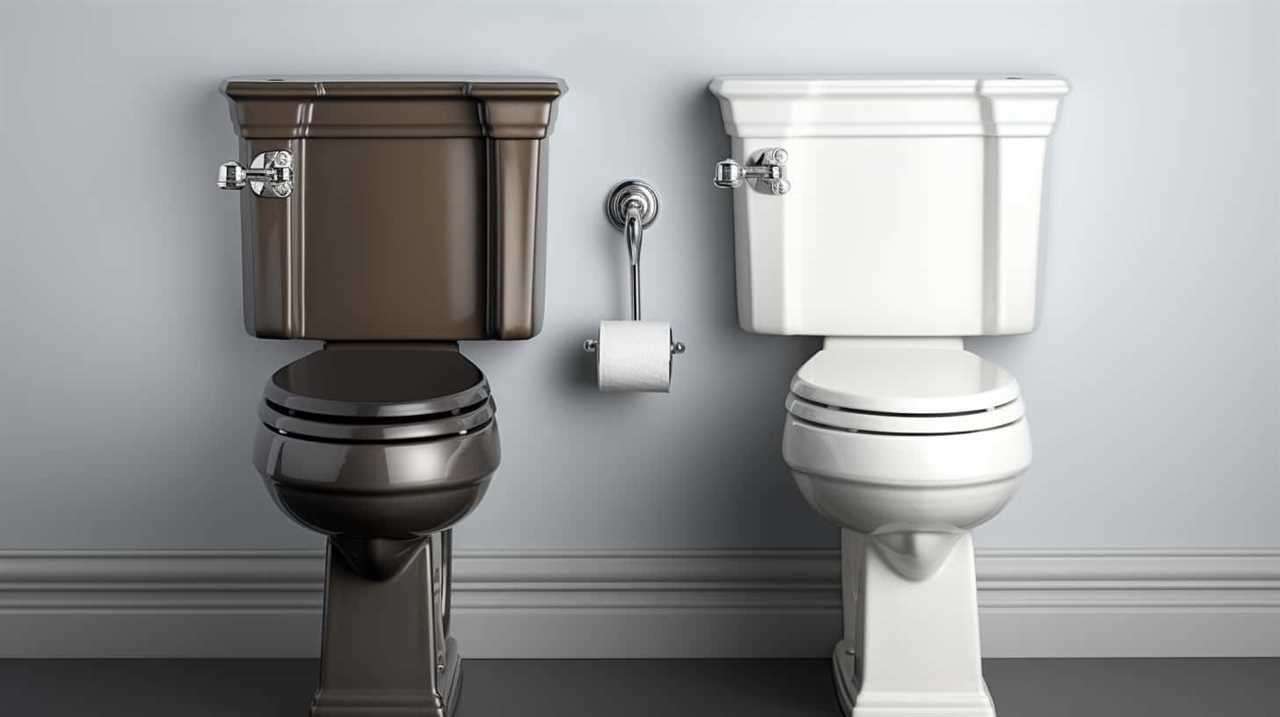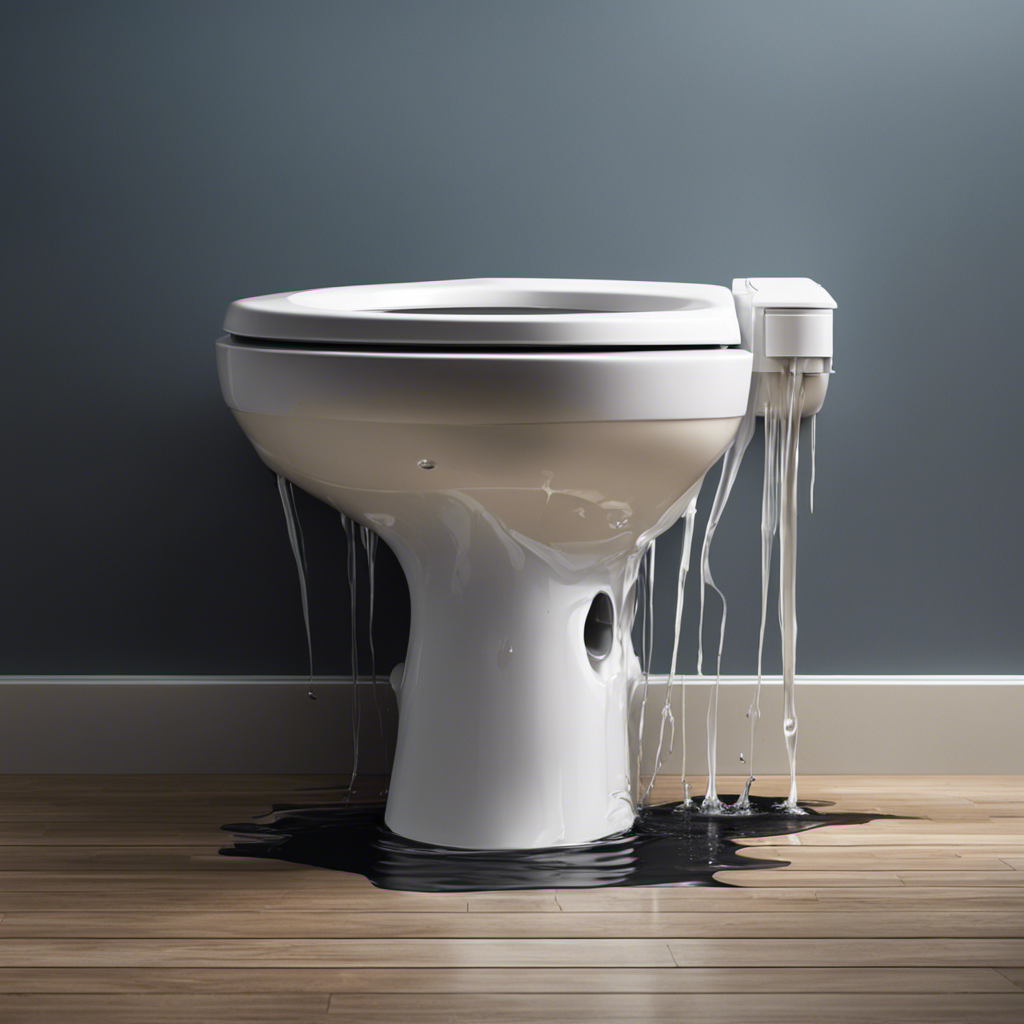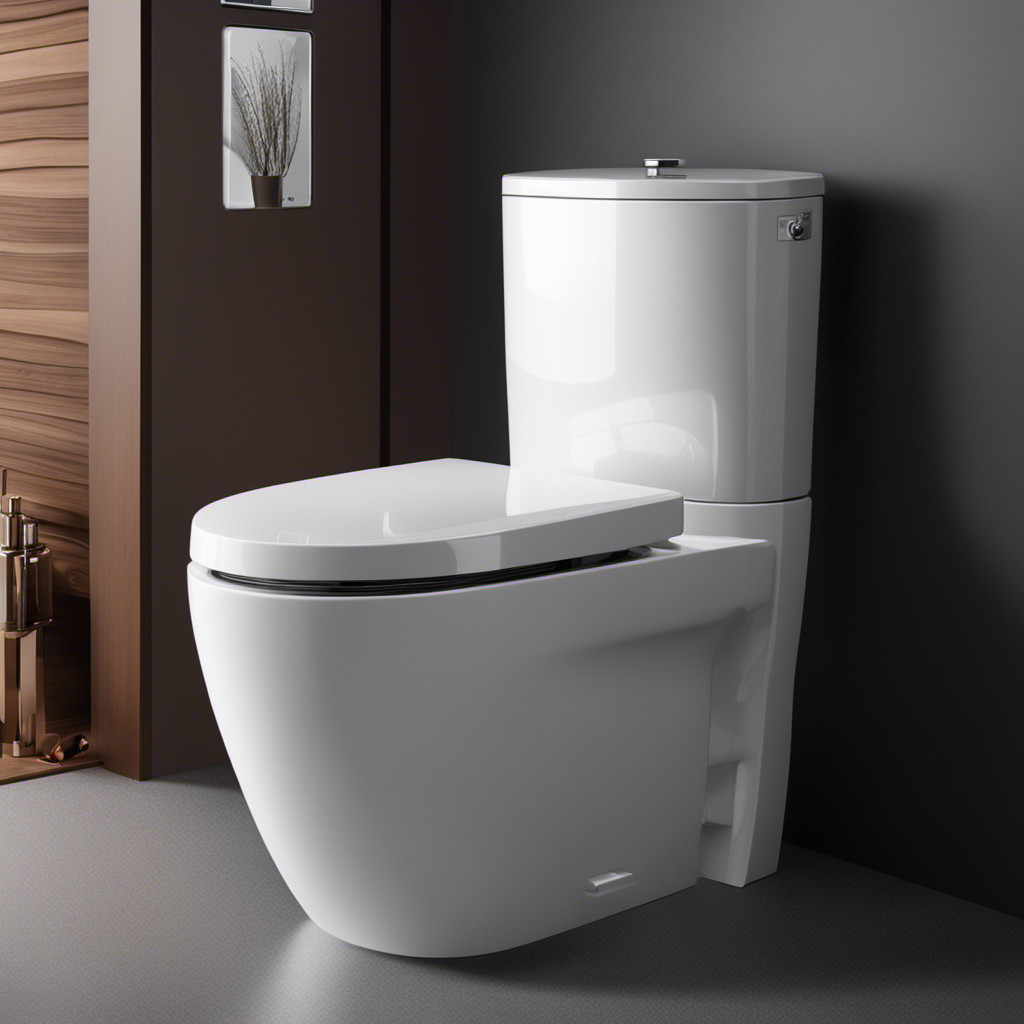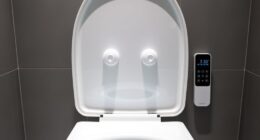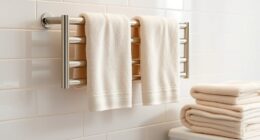Are you curious about how toilets with two buttons work? Well, we’ve got you covered!
In this article, we’ll dive into the fascinating world of dual flush systems. These innovative toilets provide a more efficient and eco-friendly way to flush, allowing us to conserve water without sacrificing cleanliness.
So, if you’re ready to master the art of dual flushing and understand the inner workings of these modern marvels, let’s get started!
Key Takeaways
- Two buttons on dual flush toilets provide users with a choice between a full flush and a half flush.
- The purpose of this feature is to reduce the environmental impact of flushing by allowing users to conserve water.
- The full flush option is for solid waste and ensures a thorough flush, while the half flush option is for liquid waste and saves water.
- Dual flush toilets offer several benefits, including water conservation, reduced environmental impact, and cost savings.
The Purpose of Two Buttons
The purpose of two buttons on toilets is to provide users with a choice between two different flushing options. This innovative feature is part of water-saving technology, designed to reduce the environmental impact of flushing.

The two buttons allow users to select either a full flush or a half flush, depending on their needs. The full flush option uses more water and is meant for solid waste, ensuring a thorough and effective flush. On the other hand, the half flush option uses less water and is suitable for liquid waste, saving water in the process.
Understanding the Dual Flush System
To understand the dual flush system, we need to examine its components and how they work together. Dual flush toilets have two buttons – one for a full flush and one for a half flush. The purpose of this system is to provide a more efficient and effective way of flushing waste while conserving water.
The environmental impact of dual flush toilets is significant, as they use less water compared to traditional toilets. On average, a dual flush toilet uses about 1.28 gallons of water per flush, whereas traditional toilets use around 1.6 gallons or more. This means that dual flush toilets can save a significant amount of water over time, contributing to water conservation efforts.
Now let’s move on to how the buttons control water flow and flushing mechanisms.
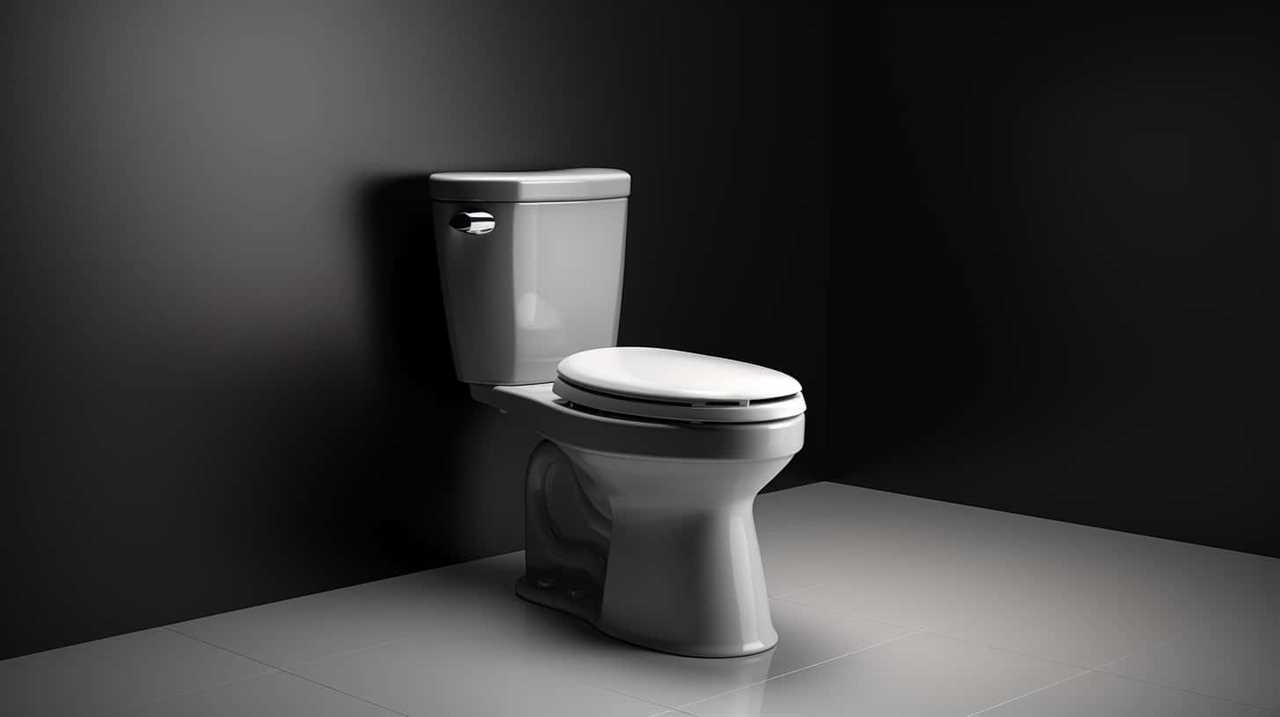
How the Buttons Control Water Flow
To understand how the buttons control water flow in toilets with two buttons, let’s explore their mechanism.
These toilets are designed with water saving technology in mind, offering users different flushing options based on their needs. The buttons are strategically placed to provide easy access and control over the water flow.
When the smaller button is pressed, it activates a partial flush, releasing a smaller amount of water for liquid waste. On the other hand, pressing the larger button triggers a full flush, releasing a larger volume of water for solid waste.
By offering these two options, toilets with two buttons allow users to conserve water by using the appropriate flushing option for each situation.

This innovative design promotes water efficiency and sustainability in our daily lives.
Benefits of Using a Toilet With Two Buttons
Using a toilet with two buttons offers us several benefits. These toilets are equipped with water-saving technology, which helps conserve water and reduce our environmental impact. Here are some key advantages of using a toilet with two buttons:
- Efficient water usage:
- The dual flush mechanism allows us to choose between a full flush and a half flush, depending on our needs. This flexibility enables us to use less water for liquid waste and more for solid waste, resulting in significant water savings.
- On average, these toilets consume 20% less water than traditional single-flush toilets, making them an eco-friendly choice.
- Cost savings:
- By using less water, we can reduce our water bills and save money in the long run.
- Additionally, these toilets contribute to the sustainability of our water resources, ensuring their availability for future generations.
Tips for Maintaining a Dual Flush Toilet
When maintaining a dual flush toilet, we can follow these tips to ensure its longevity and efficiency.
Dual flush toilets are known for their water-saving benefits, but like any other appliance, they can encounter common problems.
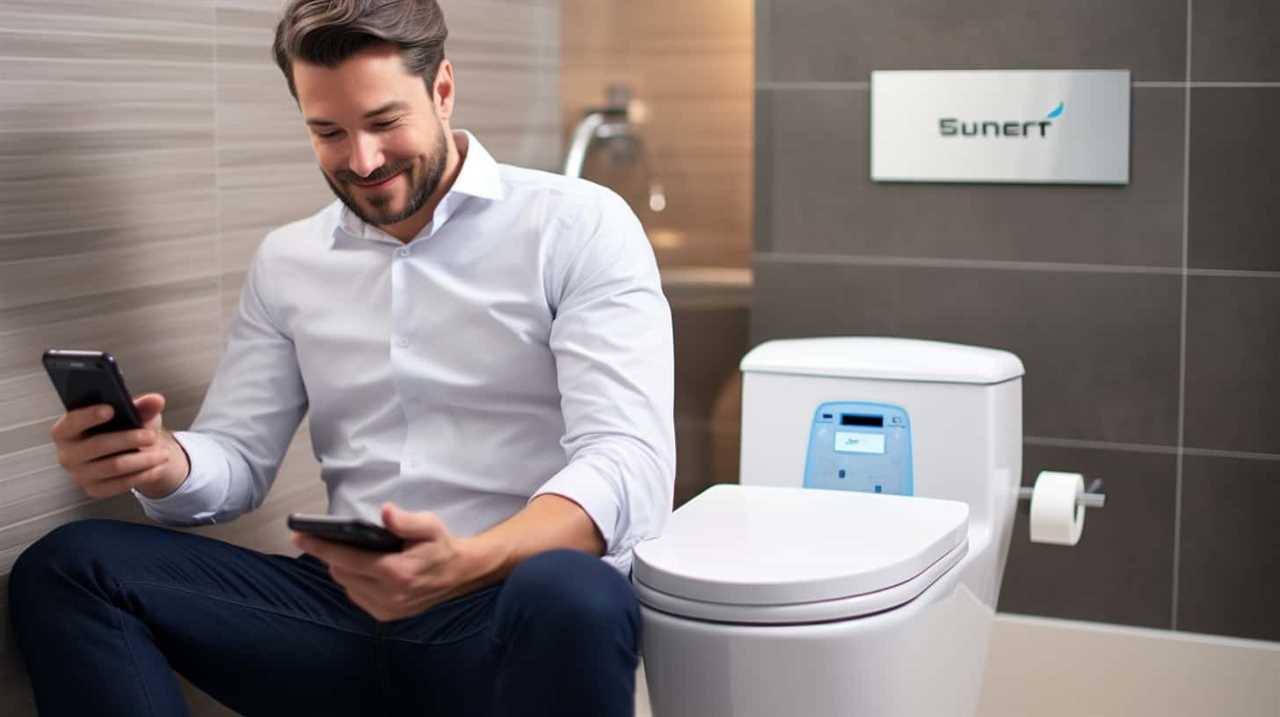
One common issue is a weak flush, which can be caused by a clogged rim jet or a faulty flush valve. To troubleshoot this, we can check and clean the rim jets using a wire or toothbrush and ensure that the flush valve is functioning properly.
Another problem that may arise is a leaking toilet. This can be caused by a worn-out flapper valve or a faulty fill valve. To fix this, we can replace the flapper valve or adjust the fill valve to stop the leakage.
Regular maintenance, such as cleaning the toilet bowl and checking for leaks, is essential to keep the dual flush toilet operating efficiently.
Frequently Asked Questions
What Is the Average Cost of a Toilet With Two Buttons?
The average cost of a toilet with two buttons depends on various factors such as brand, design, and additional features. It is important to consider maintenance requirements and compare prices from different suppliers before making a purchase.
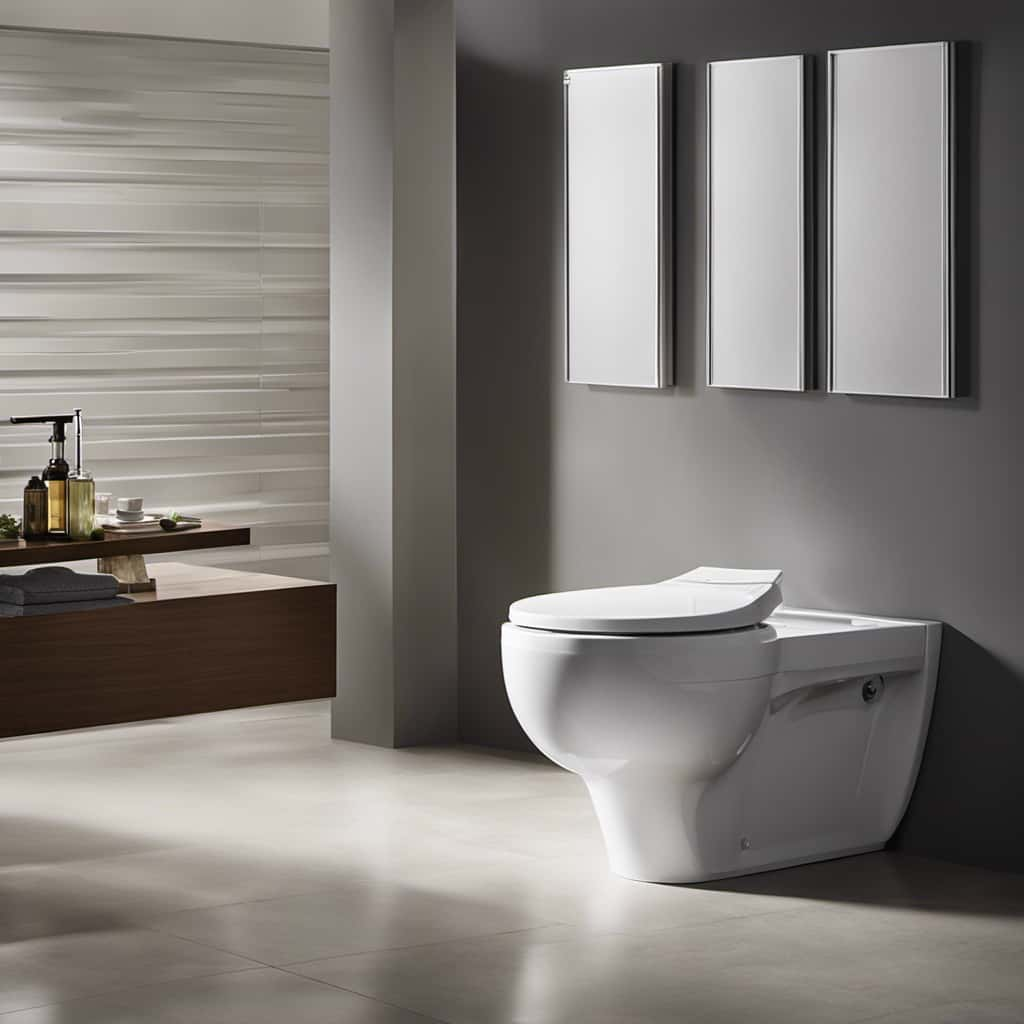
Are There Any Specific Plumbing Requirements for Installing a Toilet With Two Buttons?
When installing a toilet with two buttons, it’s important to consider the plumbing requirements. The installation process may require adjustments to the water supply and waste pipe connections.
Can a Toilet With Two Buttons Be Retrofitted in an Existing Bathroom?
Yes, a toilet with two buttons can be retrofitted in an existing bathroom. However, there may be some challenges with plumbing requirements. The benefits of using a dual flush toilet include water conservation and cost savings.
How Do You Know Which Button to Press for a Full Flush or a Half Flush?
To determine which button to press on a toilet with two buttons, consider the water-saving benefits. One button typically provides a half flush for liquid waste, saving water. The other button offers a full flush for solid waste, preventing clogs.
Are There Any Disadvantages or Drawbacks to Using a Toilet With Two Buttons?
There can be disadvantages or drawbacks to using a toilet with two buttons. Some potential issues include confusion about which button to press, potential for malfunction or maintenance, and the need for additional cost and complexity in the design and installation process.
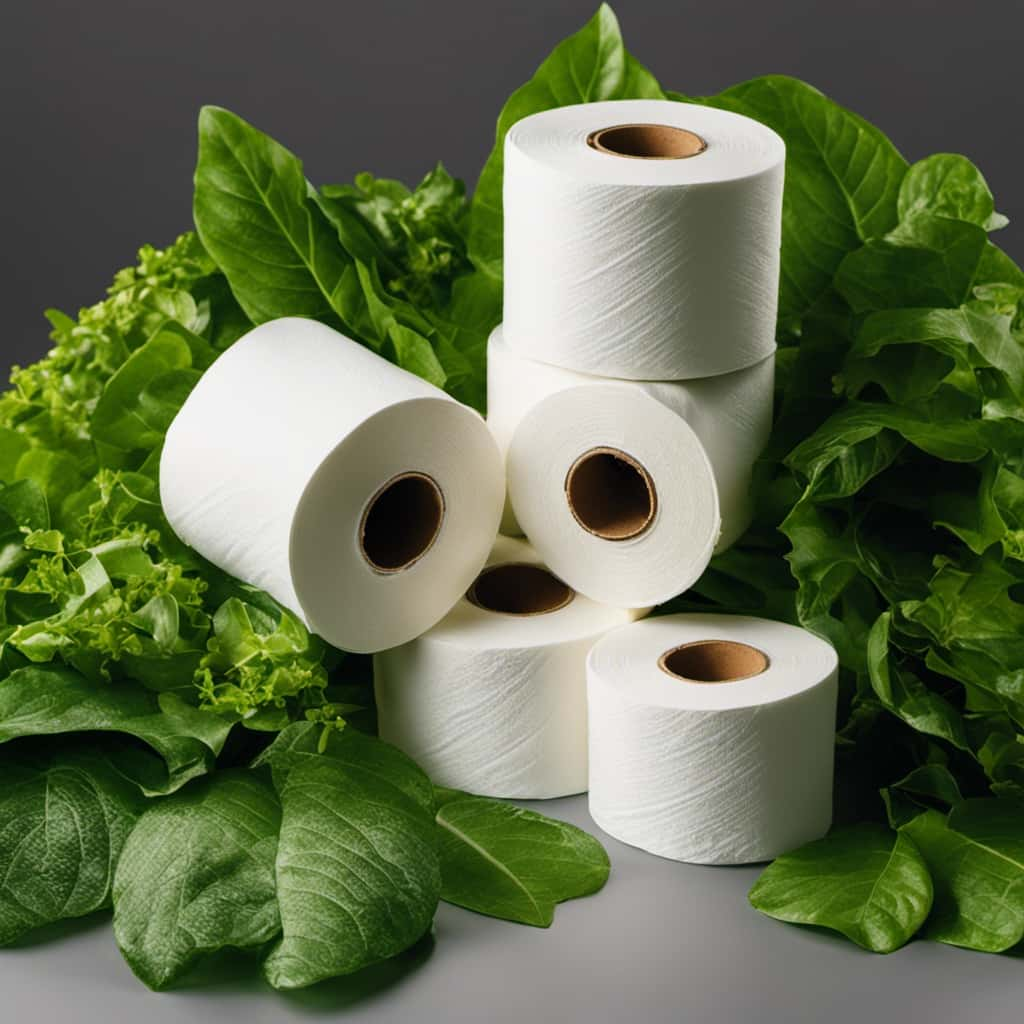
Conclusion
In conclusion, toilets with two buttons offer a more efficient and environmentally-friendly way of flushing waste. By providing the option of a half flush or a full flush, these toilets save a significant amount of water compared to traditional single-flush toilets.
According to a study conducted by the Water Services Association of Australia, dual flush toilets can reduce water usage by up to 67% in residential settings. This statistic highlights the importance of adopting these innovative toilets to conserve water resources and promote sustainability.



